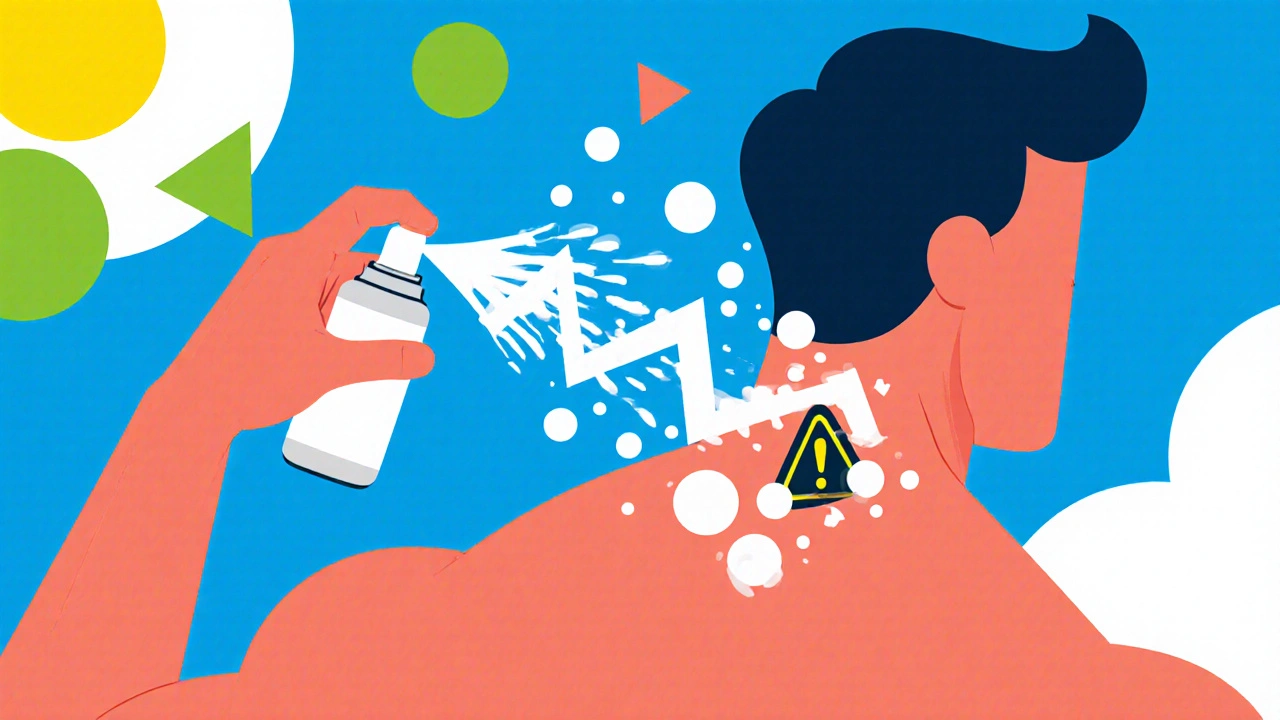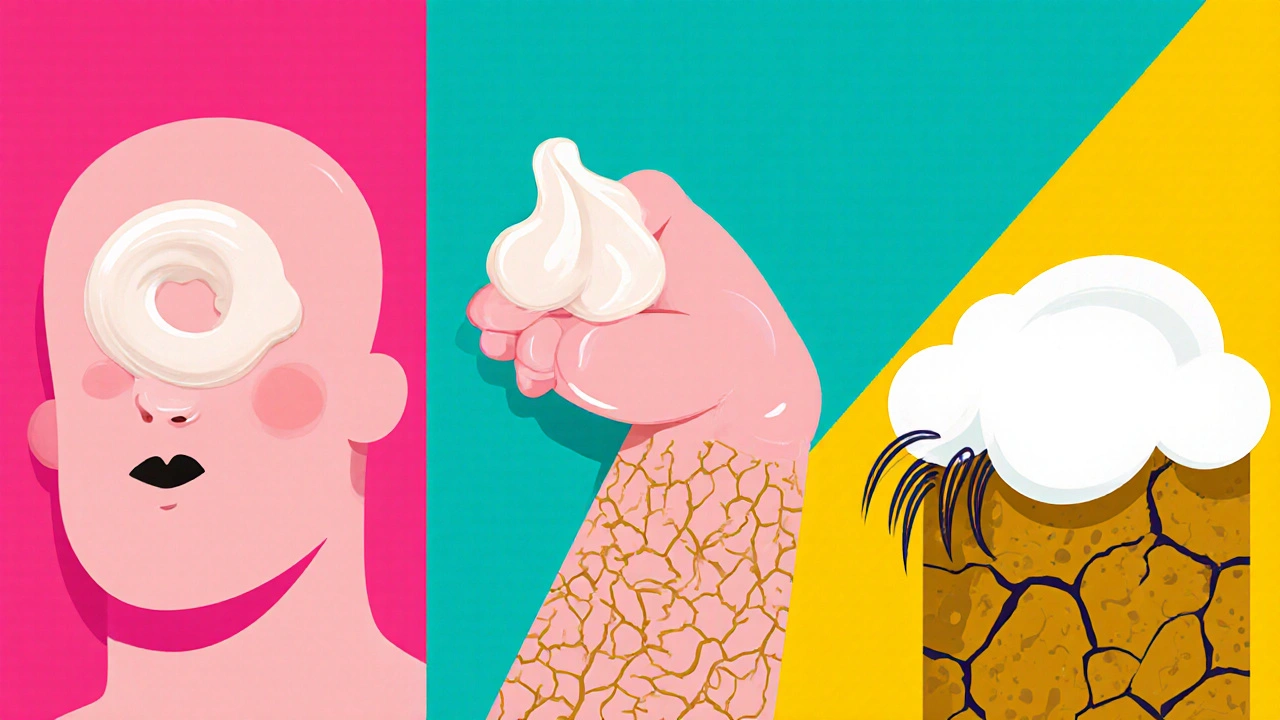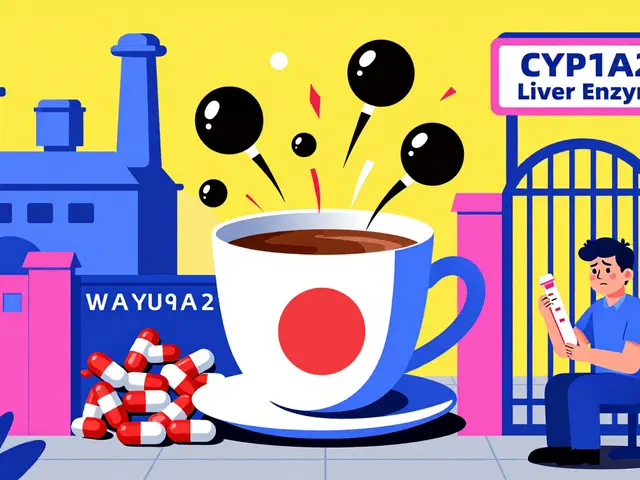Clobetasol is one of the strongest topical corticosteroids available by prescription. It doesn’t cure skin conditions like psoriasis, eczema, or lichen planus-but it can calm them down fast. The big question most people ask isn’t just whether it works. It’s: Which form should I use-cream, ointment, or foam? The answer isn’t the same for everyone. It depends on your skin type, where the rash is, and what your doctor is trying to achieve.
What Is Clobetasol?
Clobetasol propionate is a class I corticosteroid, meaning it’s in the highest potency category for topical steroids. It works by suppressing the immune response in the skin. That reduces redness, swelling, itching, and scaling. It’s not something you use long-term. Doctors typically prescribe it for short bursts-two weeks or less-because overuse can cause thinning skin, stretch marks, or even systemic side effects.
It’s not sold over the counter. You need a prescription. And even then, it’s not for every kind of rash. If you’ve got an infection, like a fungal or bacterial one, clobetasol can make it worse. That’s why your doctor will always check what’s really going on before prescribing it.
Clobetasol Cream: Best for Moist, Oily, or Weeping Skin
Clobetasol cream has water as its base. That makes it lighter and easier to spread. It absorbs quickly and leaves less of a greasy residue. If you’re dealing with a flare-up on your face, neck, armpits, or groin-areas where skin is thinner and more sensitive-cream is often the go-to.
It’s also better for skin that’s already moist or weeping. Think of eczema that’s oozing a little after scratching. Cream won’t trap moisture the way thicker formulas do, so it’s less likely to irritate. People with oily skin usually prefer cream because it doesn’t feel heavy or clog pores.
But here’s the catch: because it’s less greasy, it doesn’t protect the skin barrier as well. If your skin is dry, cracked, or flaky, cream might not deliver enough moisture to help healing. In those cases, you’ll want something thicker.
Clobetasol Ointment: The Heavy Hitter for Dry, Thick Skin
Clobetasol ointment is oil-based, usually made with petrolatum or mineral oil. It’s thick, sticky, and stays on the skin longer. That’s why it’s more effective at delivering the medicine deep into thick, scaly patches-like the plaques of psoriasis on elbows, knees, or the scalp.
It’s also better for very dry skin. The ointment forms a protective seal that locks in moisture while the steroid works underneath. If your skin feels tight, flaky, or like sandpaper, ointment gives you both treatment and hydration.
But it’s not for everyone. The greasiness can be a dealbreaker. Some people avoid it because it stains clothes. Others find it uncomfortable on the face or in hot weather. It’s also not ideal for areas with hair, like the scalp, unless it’s specifically formulated for that use.
Studies show ointments can increase steroid absorption by up to 20% compared to creams. That means it can work faster-but it also means you need to be extra careful not to overuse it.

Clobetasol Foam: The Discreet, Easy-to-Apply Option
Clobetasol foam came onto the market later than cream and ointment, but it’s become a favorite for many. It’s a pressurized aerosol that turns into a light, airy foam when you spray it. No rubbing needed. It dries fast and doesn’t leave residue.
It’s especially useful for the scalp. If you’ve got psoriasis or eczema on your head, foam is easier to apply than cream or ointment. You don’t have to fight through thick hair. It also works well on the back, shoulders, or any area that’s hard to reach.
Because it’s alcohol-based, foam can feel cooling and soothing on irritated skin. But that same alcohol can sting if your skin is broken or raw. If you’ve got open sores or recent burns, avoid foam until the skin heals.
One big advantage: foam is less likely to cause hair follicle irritation. That’s why dermatologists often recommend it for long-term maintenance on the scalp after the worst of the flare-up is gone.
How to Choose the Right Form
There’s no single best form of clobetasol. The right one depends on your skin and where the problem is.
- Use cream for sensitive areas (face, groin, armpits), moist skin, or oily skin.
- Use ointment for thick, dry, scaly patches (elbows, knees, palms, soles).
- Use foam for hairy areas (scalp, beard), hard-to-reach spots, or if you want something that dries fast and doesn’t stain.
Some people switch forms during treatment. For example, they might start with ointment on thick plaques, then switch to foam once the skin smooths out. Others use cream on the face and ointment on the body. Your doctor might suggest that too.
Don’t pick based on what your friend uses. What works for someone else might irritate your skin. Always follow your doctor’s instructions on how much to use and how often.
Common Mistakes People Make
Even with a prescription, people mess up. Here are the top errors:
- Using too much. A thin layer is enough. A pea-sized amount covers an area the size of two adult palms.
- Applying it daily for months. Long-term use raises risk of skin thinning and adrenal suppression.
- Putting it on broken skin without checking with your doctor. It can increase absorption and cause side effects.
- Using it on the face without direction. Facial skin absorbs steroids faster. Only use clobetasol on the face if your doctor says it’s safe.
- Stopping too soon. If you feel better after three days, you might think it’s done. But the inflammation might still be there under the surface. Finish the full course unless told otherwise.
What to Expect When You Start
Most people notice improvement within 3 to 5 days. Itching and redness drop fast. Scaling takes longer-sometimes up to two weeks. If you don’t see any change after 10 days, talk to your doctor. It could mean the diagnosis is wrong, or you need a different treatment.
Side effects are rare if used correctly. But if you notice skin turning white, thinning, or developing stretch marks, stop using it and call your doctor. These are signs you’ve used too much or too long.
Some people feel a slight stinging when they first apply foam or cream. That’s normal if your skin is inflamed. If it burns badly or you break out in hives, stop immediately. That’s an allergic reaction.
Alternatives and When to Consider Them
Clobetasol is powerful-but not always necessary. For mild eczema or psoriasis, over-the-counter hydrocortisone 1% might be enough. For scalp psoriasis, calcipotriene (a vitamin D analog) is often used alongside or instead of steroids. Tacrolimus and pimecrolimus are non-steroid options for sensitive areas like the face.
If you’ve used clobetasol for more than two weeks and your skin isn’t clear, your doctor might switch you to a different class of medication. Phototherapy, biologics, or oral treatments may be next steps.
The goal isn’t just to suppress symptoms. It’s to get your skin healthy enough that you can manage it with milder treatments-or even none at all.
Final Thoughts
Clobetasol is a tool, not a cure. Cream, ointment, and foam each have their place. The key is matching the form to the condition-not the other way around. Use the right one, use it correctly, and use it only as long as needed. That’s how you get results without the risks.
Keep track of what works. Write down when you start, what form you use, and how your skin changes. That info helps your doctor adjust your plan. And if you ever feel unsure-ask. There’s no shame in getting clarification. Your skin matters.
Can I use clobetasol cream on my face?
Only if your doctor specifically says so. The skin on your face is thinner and absorbs steroids more easily. Using clobetasol there without guidance can cause skin thinning, acne, or redness that doesn’t go away. For facial eczema or rosacea, your doctor will likely recommend a much weaker steroid or a non-steroid option.
Which form of clobetasol works the fastest?
Ointment tends to work fastest because it’s more occlusive and increases absorption. Cream works well for surface inflammation and itching. Foam is fast-acting too, especially on the scalp, because it spreads easily and dries quickly. But speed isn’t everything-long-term results depend on using the right form for your skin type.
Can I use clobetasol foam on my scalp every day?
No. Even though foam feels gentle, clobetasol is a high-potency steroid. Using it daily for more than two weeks increases the risk of side effects like hair thinning or skin damage. Most doctors recommend using it once or twice a day for no longer than two weeks, then switching to a maintenance treatment like calcipotriene or a low-dose steroid.
Is clobetasol ointment better than cream for psoriasis?
For thick, scaly psoriasis plaques-especially on elbows, knees, or the scalp-ointment is usually more effective. It penetrates deeper and keeps the skin moisturized. For thinner, red, inflamed patches, cream may be just as good and less greasy. The choice depends on the texture of your skin, not just the diagnosis.
What happens if I stop using clobetasol too soon?
If you stop early, your symptoms might come back quickly. Steroids like clobetasol suppress inflammation-they don’t fix the root cause. Stopping after just a few days might mean the immune response is still active under the surface. Always finish the full course unless your doctor tells you to stop.



October 31, 2025 AT 12:20 PM
Clobetasol foam on the scalp is a game changer. I used to hate the greasy mess of ointment, especially when I had to leave the house. Foam dries in seconds, no residue, and doesn’t make my hair look like I spilled motor oil on it. Just don’t spray it near your eyes - learned that the hard way.
Also, never use it daily beyond two weeks. I did, and my scalp started shedding like a dog in spring. Scary stuff.
Doctor switched me to calcipotriene after that. Still works, way less scary.
Also, if your skin is broken, skip the foam. It stings like a wasp nest.
Bottom line: foam for maintenance, ointment for flare-ups. Cream? Only if you’re allergic to feeling like you’re wearing a grease suit.
November 1, 2025 AT 19:31 PM
Let’s be real - most people don’t care about the science. They just want the itching to stop. That’s why clobetasol is so dangerous. It’s the opioid of topical steroids. You get relief, you feel better, you think you’ve won. But the damage creeps in slowly. Skin thinning. Stretch marks. Telangiectasia. You don’t notice until you’re 40 and your arm looks like a deflated balloon.
And yet, people use it like it’s lotion. ‘My cousin’s aunt’s neighbor used it for a rash and it vanished!’ Yeah, and your cousin’s aunt’s neighbor probably has skin that looks like parchment now.
The real problem isn’t the drug. It’s the culture of quick fixes. We want magic. We don’t want to sit with discomfort. We don’t want to try non-steroid options. We don’t want to wait. And so we burn our skin to feel better for five days.
It’s not medicine. It’s self-sabotage dressed in a prescription bottle.
November 2, 2025 AT 09:54 AM
My dermatologist gave me the foam for scalp psoriasis. First time I used it, I thought it was a joke. Like, ‘you’re giving me a hair spray?’ But it worked. No mess, no smell, didn’t make my pillowcase look like a grease stain. I switched from ointment after two weeks because I couldn’t stand the greasiness on my neck.
Also, cream on the face? I tried it once. Got a breakout that lasted three weeks. Never again. Facial skin is not your arm. It’s more like tissue paper soaked in vinegar.
One thing I learned: use the pea-sized rule. I used to think ‘more is better.’ Turns out, more is just more side effects.
And yeah, stop after two weeks. Even if it feels good. Even if it looks better. Your skin remembers. It’s not a vacation. It’s a temporary ceasefire.
November 3, 2025 AT 16:58 PM
Anyone who uses clobetasol without a doctor’s exact instructions is playing Russian roulette with their skin. Period. No exceptions. No ‘I’ve used it before.’ No ‘it worked for my cousin.’ You don’t get a pass because you’re ‘used to it.’
It’s a class I steroid. That’s not a suggestion. That’s a warning label written in blood.
And if you’re using it on your face? You’re either reckless or stupid. Either way, you’re not helping yourself.
November 4, 2025 AT 11:03 AM
I just wanted to say thank you for this post. I’ve been dealing with psoriasis for 12 years and this is the clearest breakdown I’ve ever read. I used to use ointment everywhere - even on my face - because I thought ‘stronger is better.’ I didn’t know I was damaging my skin until I got stretch marks on my inner thighs. Terrifying.
Now I use foam on my scalp, cream on my elbows, and only ointment when it’s really bad. And I track everything in a notebook. It’s helped my dermatologist adjust my treatment so much better.
Also - don’t stop too soon. I did that once. Rash came back worse. Took me three months to recover. Lesson learned.
Thank you for being so clear. This is the kind of info that actually saves people.
November 5, 2025 AT 07:29 AM
One thing I wish more people understood: clobetasol doesn’t cure anything. It just silences the noise. The immune system is still active. The inflammation is still there. You’re not healing - you’re suppressing.
That’s why maintenance matters. After the flare, you need to transition to something gentler. Calcipotriene, coal tar, phototherapy - these aren’t backups. They’re the real long-term game.
And yes, foam on the scalp is brilliant. I use it every other day after my flare-up. No irritation, no buildup, and it doesn’t make my hair look like I slept in a grease factory.
But please - if you’re using it daily for more than 10 days, you’re already in danger zone. Talk to your doctor. Don’t wait for the skin to thin before you act.
November 5, 2025 AT 09:13 AM
Why do we even need three forms? It’s all the same drug. Why not just make one super-effective version and call it a day? Why complicate things? Is this just pharma’s way of selling more stuff?
I mean, if it’s clobetasol propionate, why does the base matter? Isn’t the active ingredient the same?
Also, who decided foam was a good idea? Sounds like a gimmick. Like those ‘magic’ hair sprays.
And why do doctors make us switch? Just give me the strongest one and let me use it until it’s gone. Problem solved.
Just saying - this feels like over-engineering for profit.
November 7, 2025 AT 06:08 AM
Let me break this down with surgical precision, because the misinformation around clobetasol is rampant and dangerous. Cream is not ‘lighter’ - it’s less occlusive, which means lower transdermal absorption. Ointment, by virtue of its petrolatum base, enhances penetration by forming a hydrophobic barrier - this is basic pharmacokinetics.
Studies from the Journal of the American Academy of Dermatology (2019) show ointments increase bioavailability by 18–22% compared to creams. Foam, while convenient, has alcohol as a penetration enhancer, which can cause stinging on compromised skin - a fact often glossed over by influencers.
And yet, people treat this like a grocery list. ‘I’ll use the foam because it’s easy.’ No. You use it because your lesion is on a hairy, inaccessible area. That’s it.
Also, the ‘pea-sized amount’ rule is not arbitrary - it’s based on the surface area-to-dose ratio established in clinical trials. Overapplication leads to systemic absorption. You don’t want adrenal suppression because you thought ‘more is better.’
This isn’t skincare. It’s pharmacotherapy. Treat it like you’d treat a controlled substance - because it is one.
November 8, 2025 AT 12:54 PM
They don’t want you to know this but clobetasol is part of a bigger scheme. The skin industry makes billions off you being scared of your own body. They give you this ‘strong’ steroid so you get hooked, then they sell you ‘maintenance’ products that cost 3x more. Meanwhile, your skin gets thinner, your hormones get messed up, and they just keep selling you more.
I used it for a rash. Now I have white patches on my arms and my doctor won’t tell me why. I think they’re hiding something. Maybe it’s linked to the water fluoridation or 5G. I read it on a forum.
And why is foam even a thing? It’s just aerosol. They’re spraying chemicals into your lungs. You think that’s safe? I don’t trust the FDA. I don’t trust doctors. I use aloe vera now. It’s cheaper and doesn’t have ‘propionate’ in the name.
Also, my cousin’s neighbor’s dog got a rash and they put coconut oil on it. It cleared up in two days. Coincidence? I think not.
November 9, 2025 AT 19:51 PM
I just wanted to say - I used the cream on my face for three days because I was desperate. It worked. The redness vanished. But then I noticed my skin looked… thinner. Like, I could see the veins. I panicked. I stopped. It’s been two months and it’s still not back to normal.
I feel so stupid. I didn’t read the warnings. I just wanted it to go away.
Now I’m scared to use anything on my face. Even hydrocortisone.
Can anyone tell me if this is permanent? I’m so scared.
Also, I’m sorry for being so emotional. I just didn’t know.
November 11, 2025 AT 04:32 AM
Form matters because biology matters. Skin is not a uniform surface. It has thickness variations. It has hair follicles. It has sebaceous glands. It has different permeability based on location. Cream is for areas where moisture retention is a liability. Ointment is for areas where moisture retention is a necessity. Foam is for areas where application precision is compromised by anatomy.
There is no universal solution because there is no universal skin.
And yet, we treat medical treatment like a one-size-fits-all hoodie. We want simplicity. We want convenience. We want magic.
But the body doesn’t care about our desire for simplicity. It responds to chemistry. To physics. To biology.
Respect the complexity. Or pay the price.
November 12, 2025 AT 23:33 PM
Just wanted to say I used the foam on my scalp for 10 days and it worked wonders. No more flakes. No more itching. And it didn’t make my hair greasy 😊
Also, I didn’t know about the pea-sized rule - I was using like a whole thumb. Whoops.
Now I’m on maintenance with a gentle shampoo. Still a little red but way better.
Thank you for the info. I felt so lost before this.
November 13, 2025 AT 15:27 PM
You people are overthinking this. In Nigeria, we just use the strongest thing we can get. If it works, it works. If your skin gets thin? That’s your problem. The rash is gone, right?
My uncle used clobetasol ointment for 6 months straight. He got stretch marks. He still walks around like a king. No one cares. The itching is gone.
Stop being so afraid of your skin. It’s just skin. Use what works. Who cares about FDA? We have real problems here.
Also, foam? That’s for weak people who can’t rub it in. Ointment is for real men.
November 13, 2025 AT 16:01 PM
It is both irresponsible and ethically negligent to present clobetasol as a benign treatment option without emphasizing the irreversible risks associated with its misuse. The notion that ‘it works’ is a dangerous fallacy. The absence of immediate side effects does not equate to safety. The damage is insidious. It is cumulative. It is silent.
Patients are not consumers. They are not users. They are vulnerable individuals seeking relief from suffering - and the medical-industrial complex exploits that vulnerability by normalizing the use of a class I steroid as if it were a moisturizer.
The fact that this post does not explicitly state that long-term use can lead to Cushing’s syndrome, adrenal suppression, or permanent dermal atrophy is a failure of duty. You have a responsibility to warn. You have not fulfilled it.
Use of clobetasol beyond two weeks without physician supervision constitutes medical malpractice. Period.